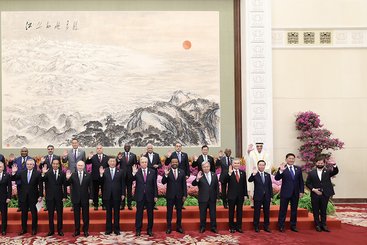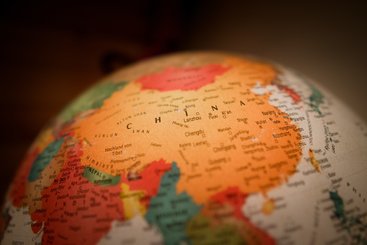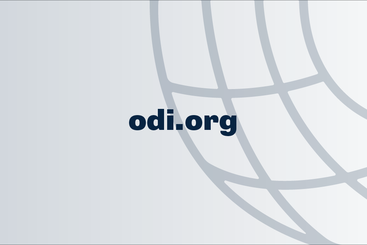Welcome to the December issue of our China and Global Development round-up. This month, I’ve hand-picked a selection of resources that shed light on the domestic debate in China on the Global South; new developments in economics and finance; the resource curse; China–Southeast Asia relations; and space collaboration with African countries.
How China sees the Global South
Read 1: What is the Global South?
The term ‘Global South’ is widely discussed in the international affairs and development community, including in the UK (see a recent debate in the Financial Times here and here). The discussion is different in China, where the term is fully embraced, and the Global South encompasses all low- and middle-income countries, including China itself. Ren Lin of the Chinese Academy of Social Sciences discusses (in Mandarin) how China sees the Global South. First, she clarifies how the concept has evolved from a term describing former colonies to include all low- and middle-income countries. She goes on to argue that the concept has been manipulated by wealthy countries to promote their own interests, exclude China by circulating ‘debt-trap’ narratives and promote India as a leader of the Global South. Finally, she suggests a course of action for China: to clarify the facts to depoliticise the term, and to set the mission of the Global South as the joint pursuit of development.
Read 2: The rise of the Global South
In a similar vein, Niu Haibin, the director of the Institute of Foreign Policy at the Shanghai Institutes for International Studies, writes about the rise of the Global South in the international order (in Mandarin). The collective rise of major developing countries, including China, has given the Global South increased prominence in international security and development affairs. This has prompted global governance mechanisms to pay more attention to the core concerns of developing countries. As a member of the Global South, China presents itself as a representative of and voice for the group in global affairs.
Economics and finance
Read 3: China’s economic evolution
Writing on the East Asia Forum, Richard Katz reflects on the Chinese development model since the 1980s. Under Deng Xiaoping’s leadership in the 1980s and 1990s, China’s growth was supported by foreign knowledge, in the form of foreign advisors to the government and foreign firms bringing new knowledge and technology into the Chinese market. Under Xi Jinping, however, the government is reducing the space for foreign firms and many competitive domestic firms, and supporting (less efficient) state-owned companies. The author suggests that the government should instead emphasise increased productivity to reverse the stagnation the economy finds itself in.
Read 4: New data and insights into China’s outward financing
In November 2023, AidData released an updated version of their Chinese Development Finance dataset, which now covers the period 2000–2021. AidData also released a report drawing insights from their updated figures. The main takeaways are: 1) contrary to the general discussion that Chinese development finance is plummeting, the report finds that China is still the world’s single largest official source of international development finance; 2) China is exposed to several risks, related to debt repayment, project performance and its own reputation, and is seeking ways to manage them.
Read 5: The resource curse, or what you should and should not do when you have natural resources
In economics, countries are said to experience a ‘resource curse’ when exporting natural resources kickstarts a process that makes the country’s non-resource exports less competitive, and in the long run undermines prospects for growth. A study by Yanbai Li assesses whether China’s demand for natural resources contributed to a resource curse in other countries. The study finds that this indeed happened – countries that exported natural resources during the 2000s commodity boom did worse, in the longer term, than countries that did not.
China–Southeast Asia relations
Read 6: An overview of the BRI in Southeast Asia
The Carnegie Endowment for International Peace has produced an overview of the impact of Chinese capital in Southeast Asia. Collecting views from scholars from eight Southeast Asian countries, the report showcases the varied impacts of Chinese capital. These range from negative outcomes in the Philippines, where Chinese (private) capital has been funnelled into illicit activities, to very positive engagement in Laos and Cambodia, where the focus has been on the development of much-needed infrastructure.
Read 7: Chinese capital in Indonesia
Trissa Wijaya writes about Chinese capital in Indonesia. China is seen as a key partner in Indonesia, and the author shows how Chinese capital has complemented Indonesia’s political ambitions to strengthen an image of state-led development. However, Chinese capital is not necessarily more sustainable or inclusive than Western capital in terms of its impact.
Read 8: China–Africa space collaboration
The United States Institute of Peace has published a report on China–Africa space collaboration. This is not a commonly discussed topic and has been largely ignored in Europe and the US. China (and to a lesser extent Japan and Russia) has been active in funding and supporting satellite launches in African countries. Given the importance of this sector in achieving development, security and governance goals, the report argues that other partners should strengthen their collaborations with African countries in this domain.



